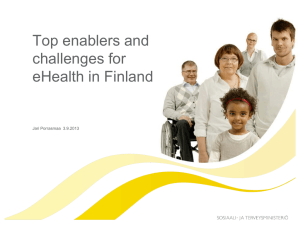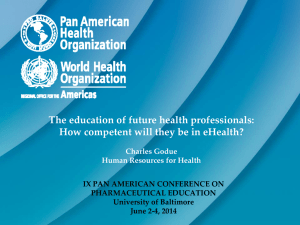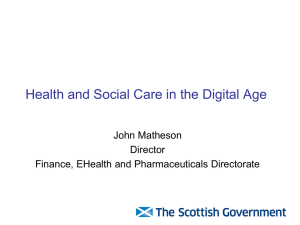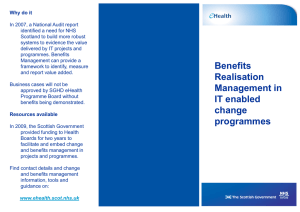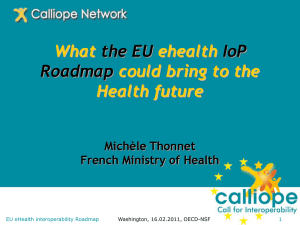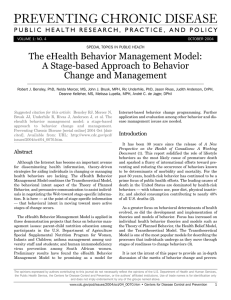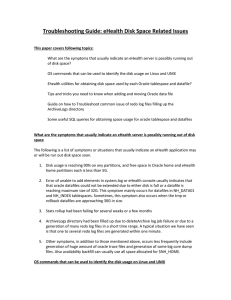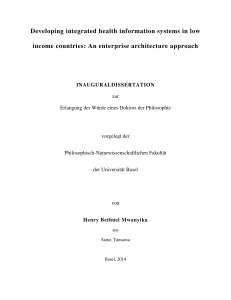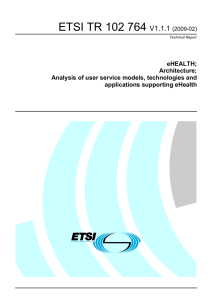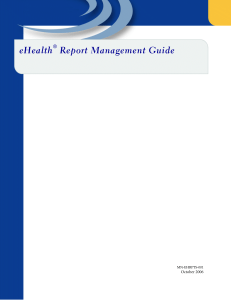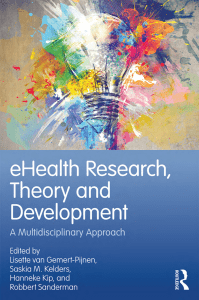eHealth Unit Institute of Digital Health Launch 22 June 2015
advertisement
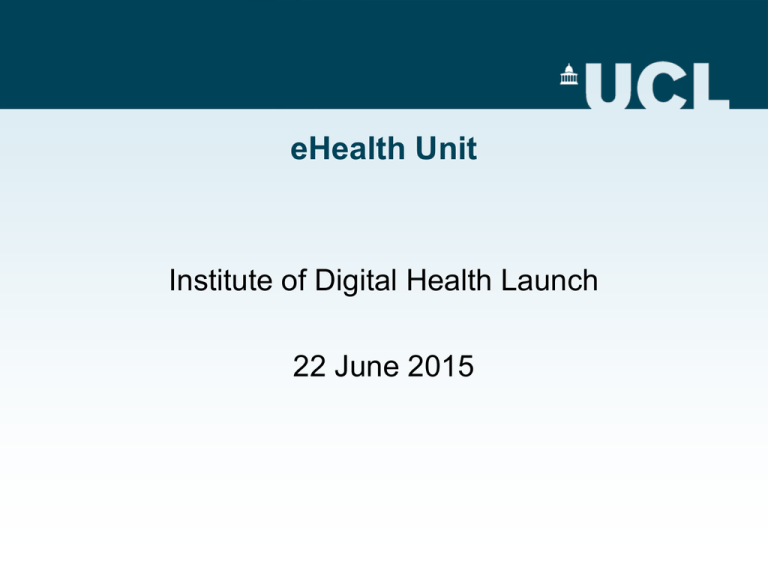
eHealth Unit Institute of Digital Health Launch 22 June 2015 Why eHealth? • People are living longer, & • People survive illnesses that used to kill them – Better living conditions – New health technologies (Drugs, Investigations, Rx) Why eHealth? • So health care costs go up, • But budgets don’t (as much) (£113bn 201415) • Need to “do more, with less” • Staff (1.4m) = largest single NHS expense eHealth Unit • Established 2003 • “To explore the use of new information and communication technologies, such as the internet and mobile phones, to improve health and health care” • Multi-disciplinary, strong PPI, grown rapidly • 3 work streams Developing & evaluating interventions for patients / the public: • Health promotion (sexual health for young people) • Behaviour change (alcohol reduction) • Self-management of long term conditions (type 2 diabetes) 2. Implementation of eHealth into routine care • Theory development Normalization Process Theory • Toolkits to promote implementation (e-HIT; NPT toolkit) • Empirical work (Systematic reviews; Alcohol; Diabetes;). electronic care records: “significantly behind schedule and costs have escalated”; “unworkable”. “Costs significantly outweigh benefits”; “Up to 98% of benefits yet to be realised” NAO 2013 PAC 2011 3. Impact of eHealth on Health Care Professional – patient interactions. • • • • “Therapeutic relationship” at the heart of medicine HCP & patients work hard at it Interactions are altered by technology Interviews & video recordings of interactions: – – – – What happens? Why it happens? What do patients and HCP want to happen? How can we facilitate this? Study or Subgroup 1.1.1 students Impact: Alcohol • DownYourDrink (DYD): – Freely available online since 2003; – C. 50,000 registered users • DYD Kingston – Tier 2 & 3 treatment for alcohol in Kingston Bewick 2008 Chiauzzi 2005 Doumas 2008b Kypri 2004 Kypri 2008 Lau-Barraco 2008 Lewis 2007a Lewis 2007b Neighbors 2004 Neighbors 2006 Walters 2007 Weitzel 2007 Subtotal (95% CI) Weight Mean Difference IV, Random, 95% CI 8.3% 6.0% 7.0% 7.3% 8.0% 6.2% 9.5% 10.3% 8.7% 7.4% 8.4% 1.7% 88.9% -22.64 [-51.05, 5.77] -15.17 [-58.09, 27.75] -7.47 [-43.90, 28.96] 15.00 [-19.69, 49.69] -32.93 [-63.08, -2.78] -14.47 [-56.21, 27.27] -28.51 [-50.39, -6.63] -43.44 [-61.00, -25.88] -17.28 [-43.50, 8.94] -10.04 [-43.69, 23.61] 2.22 [-26.07, 30.51] -13.77 [-118.73, 91.19] -19.42 [-29.83, -9.00] Mean Difference IV, Random, 95% CI Heterogeneity: Tau² = 89.12; Chi² = 15.23, df = 11 (P = 0.17); I² = 28% Test for overall effect: Z = 3.65 (P = 0.0003) 1.1.2 non-students Hester 1997 Hester 2005 Neumann 2006 Riper 2008 Subtotal (95% CI) 1.1% -242.56 [-376.51, -108.61] 2.8% -132.30 [-210.14, -54.46] 4.2% -16.03 [-74.47, 42.41] 2.9% -119.00 [-194.39, -43.61] 11.1% -114.94 [-198.60, -31.29] Heterogeneity: Tau² = 5374.82; Chi² = 12.83, df = 3 (P = 0.005); I² = 77% Test for overall effect: Z = 2.69 (P = 0.007) Total (95% CI) 100.0% -25.88 [-40.78, -10.98] Heterogeneity: Tau² = 481.91; Chi² = 39.26, df = 15 (P = 0.0006); I² = 62% -500 -250 0 250 500 Test for overall effect: Z = 3.40 (P = 0.0007) Favours experimental Favours control Khadjesari et al. Addiction 2010;106:267-82 • HeLP-Alcohol – CLAHRC funding to compare effectiveness with face to face treatment & how best to integrate into routine care Impact: Diabetes • NIHR PGfAHR • Implementation study • Part of Diabetes pathway in 2 CCG • Community Interest Company • 6 Contracts this year • Awards include: HSIP; mHealth Unawards; UCL Enterprise Conclusions • eHealth has great potential • As yet, largely unrealised • Major problems with: – Effectiveness – Engagement – Integration into care • Our research tackles these problems, adopting multi-disciplinary and mixed methods approach
